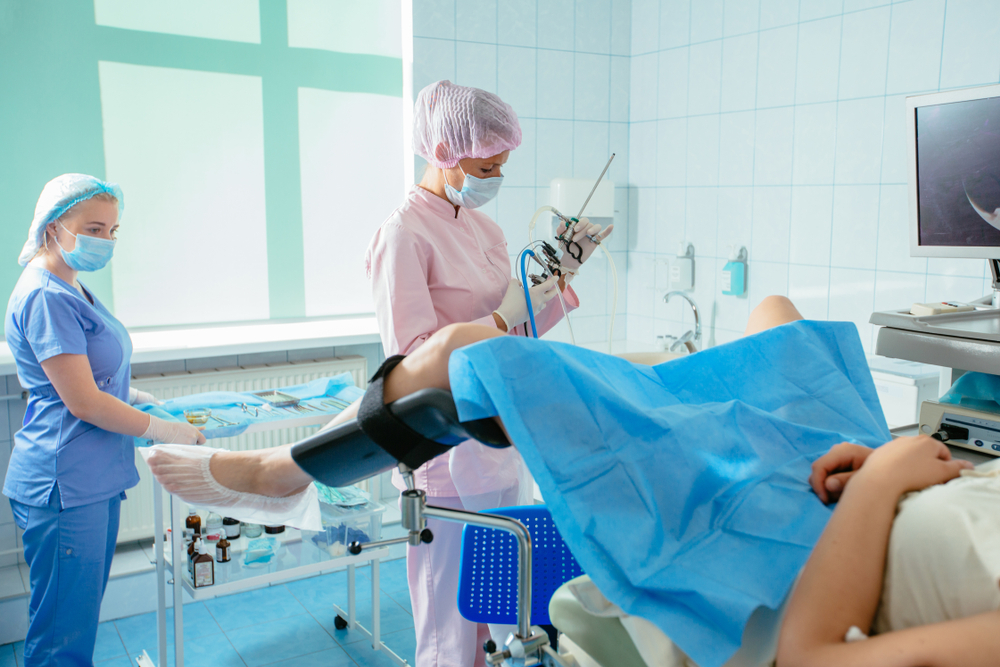Hysteroscopy Before IVF – Is It Necessary?
Hysteroscopy Essential IVF: Becoming a mother is one of the best feelings and any woman would love to become a mother at least once in her lifetime. While getting pregnant is a very normal physiological phenomenon, not all women can conceive as easily as others. Many women face problems in getting pregnant. It could be due to hormonal imbalance, damaged reproductive organs, genetic disorders and much more. These lead to infertility in women. While some of these conditions can be cured with treatment, many of these problems cannot be cured. In such a situation, IVF or In-vitro fertilization is suggested as the best-assisted reproduction technology. It can help a woman become pregnant even if there are anomalies. IVF is also useful for couples where the male has fertility issues like sperm motility, low sperm count, etc.
In short, IVF is an effective solution for infertile couples. With success rates varying between 13-43% (for different age groups), IVF is, no doubt, one of the most preferred ART (Assistive Reproductive Technology). However, IVF is costly and each cycle may need about $15,000. A failed IVF is, thus, not desired. That is why a number of tests like FSH, USG, HSG, HSN, etc. are carried out to ensure that the body is ready for the pregnancy. While these tests do give the doctors an idea about the body condition, a picture can be drawn with a hysteroscopy.

What is Hysteroscopy?
Hysteroscopy is a process in which a small device (the hysteroscope) is inserted into the cervix in order to have a full view of the endometrial cavity to look for anomalies. Hysteroscopy can also be used for operating within the endometrial cavity. It is a minimally invasive procedure that helps in the diagnosis and treatment of a number of endocervical and intrauterine problems.
Routine Hysteroscopy Before IVF Cycle
Hysteroscopy is a routine test that doctors suggest before an IVF. It allows the doctor to have a view of the uterine cavity without carrying out any major surgery. The doctor examines the lining and shape of the uterus. This is to find out whether the uterus is ready for the IVF. The hysteroscope looks for any anomalies in the uterus like scar tissues, uterine growths, etc. These anomalies can cause infertility in women and IVF may not be successful. The doctor also tries to have a look at the fallopian tube openings. That is why, a hysteroscopy is suggested alongside other tests like USG, HSG, etc. If any anomaly is detected, the doctors will identify the actual cause of infertility and try to treat the same by removing the growths and scars. Doctors can also gather samples of the uterine lining for further tests.
Benefits of Hysteroscopy IVF
Doctors are of the opinion that a hysteroscopy can significantly improve the chances of live birth. This is because the uterus is treated of all the visible causes of infertility and the embryo attachment and growth should be normal. This, significantly, reduces the chances of an IVF failure and live birth is expected in most of the cases. IVF treatment Bangkok being a costly procedure, most people would want to have a hysteroscopy done, before the embryo is planted within the body. This minimally invasive procedure is ideal for couples who are facing fertility issues due to abnormalities of the uterus. Women with failed IVF cycles are recommended a hysteroscopy in order to find out whether the cause of the failure was uterine abnormalities. If any trace of an anomaly is found in tests like the HSG. USG, etc. the same is confirmed by a hysteroscopy. If possible, an operative hysteroscopy is carried out to remove the anomaly so that the uterus becomes ready for the embryo and the IVF cycle is completed successfully.
How is Hysteroscopy Done?
A hysteroscope is an endoscope that is inserted into the cervix. It is fitted with optical and illumination channels. It comes with a sheath that creates the pathway for the inflow and outflow of the insufflations media. The procedure is usually carried out in a healthcare facility. The ideal time to conduct a hysteroscopy is when endometrium remains comparatively thin. As such, it is usually done post menstruation. The patient must be in a lithotomic posture during the entire process.
Since the size of the hysteroscope is much bigger than what can be easily passed through the cervix, cervical dilation is a must. This must be done immediately before the insertion. Cervical dilation can be achieved by brief stretching of the cervix using several expandable dilators. Misoprostol may also be used for achieving cervical dilation. However, this works only in pre-menopausal women.
Once the cervix has been dilated, the hysteroscope, along with the sheath, is positioned transvaginally and directed towards the uterine cavity. The cavity is then insufflated to allow clear visibility. Insufflation is usually done with CO2, sodium chloride solution, or other fluids. Insufflation distends the uterine cavity so as to give a clear vision to the doctors.
If anomalies or abnormities are found, a surgical hysteroscopy is carried out. This involves the introduction of a surgical hysteroscope into the uterus via the vagina. The hysteroscope will permit the entry of surgical devices to carry out the necessary surgical procedures. Doctors can usually carry out surgical procedures like submucosal fibroid resection, endometrial ablation, endometrial Polypectomy, electrocautery bipolar loop resection, etc.
Possible Risks of Hysteroscopy:
Like any other invasive or minimally invasive procedure, hysteroscopy has its share of risks. Common problems that may occur include
- Infection
- Pelvic inflammatory disease
- Uterine perforation caused by the hysteroscope or any other surgical device passed through the hysteroscope. This can cause bleeding or harm to internal organs.
- Perforation of organs like the intestines can cause peritonitis, which can get critical.
- Cervical laceration, electric and laser beam wounds, intrauterine contamination, etc. may occur as a result of hysteroscopy.
- The insufflation medium can cause problems due to embolism, fluid overload, etc.
- In rare cases, hysteroscopy may cause weakening of cervical muscles and fibers.
Is Hysteroscopy IVF Essential?
While most doctors suggest a hysteroscopy before an IVF cycle, many people are of the opinion that this is mindless medicine as there isn’t enough proof that hysteroscopy can improve the chances of a successful IVF cycle. Doctors and clinics offering IVF facilities recommend hysteroscopy as they believe that by making the uterine cavity as normal as possible, the chances of a live birth increases. And since the process is minimally invasive, there is not much to worry about. However, people opposing hysteroscopy say that if a USG shows that the uterus is in a normal state, the chances of finding anything abnormal in a hysteroscopy is very, very low.
Moreover, if a doctor wants to ensure that the uterine cavity is as normal as possible, a sonohysterogram can be carried out. It is a totally non-invasive procedure and gives the doctors a very clear view of the uterine cavity to detect any sort of abnormality. Moreover, the process is quite cheap which means that you do not have to burden yourself with the cost of the test. Opponents of hysteroscopy are also of the opinion that doctors often ‘find’ problems that may not at all be connected with you getting pregnant. But they want to treat them anyway to ‘improve’ the chances of a successful IVF. This is not only unnecessary but also adds up to the cost.
Conclusion
Hysteroscopy can give the doctors an idea about whether the uterine cavity is in a normal state so that they can proceed with the IVF cycle. That being said, there is no certainty that an IVF will be successful if hysteroscopy is carried out before the cycle. In fact, many studies have indicated that there is only a very small improvement in the percentage of live births when hysteroscopy is done before an IVF. Moreover, for failed IVFs, it is totally unnecessary to do a hysteroscopy before every IVF. Repeating hysteroscopy before every IVF will not increase the chances of live birth. Given that hysteroscopy comes with its own share of risks, you may or may not want to have it done before an IVF. If, however, the first IVF fails, you may consider a hysteroscopy to diagnose and treat any abnormality of the uterus.
Related Other Posts:
- 4 Smart Hacks for Keeping Your Nervous System Healthy
- What Does a Faint Line on Pregnancy Test Mean?
- Drinking Alcohol During Pregnancy: Is It Safe?
- 5 Simple Tips to Get Rid Of Stretch Marks After Pregnancy
- How to Cope with Back Pain and Insomnia During Pregnancy






